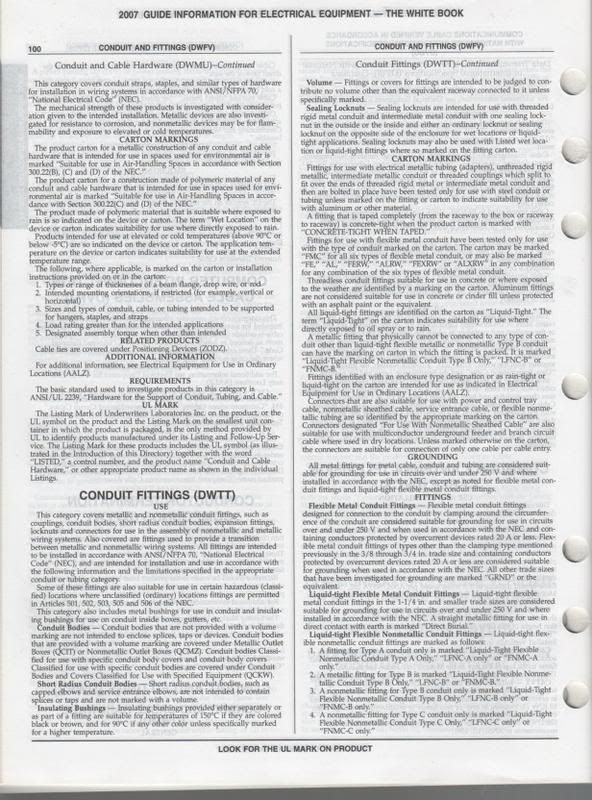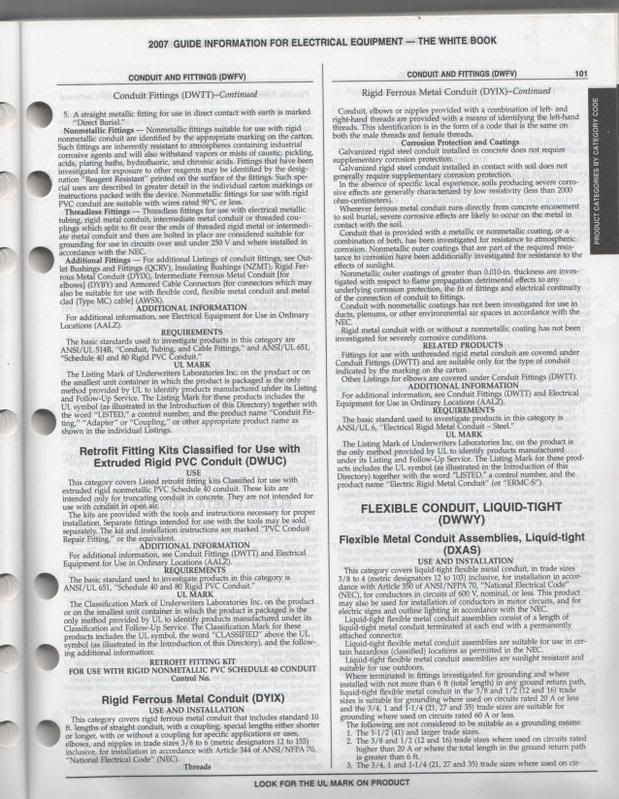jdsmith said:
Yep. I will reiterate the point that Mike made a few posts ago that the NEC is a permissive document that allows us to do anything unless it specifically says otherwise. The NEC is the only document that we have to go by - the UL listing only comes in when things are listed and provided with specific instructions. Since my conduit fittings don't come with instructions I'm not violateing what doesn't exist, so I can screw any pipe threads together that I want to.
Happy 4th of July recovery day!!!
I agree with that statement. I guess the issue I have a problem with is when a field application of a product is not specifically defined in documents like the UL white book, NEC, or other related publication. I am sure we can all come up with numerous instances where combinations of fittings have been used to transistion from one raceway to another. I like to call them 'frankenstein fittings'.
I am under the impression that in order to have the performance of the product as guaranteed by the UL listing process, it must be used exactly as tested in the UL specification. Any variation from that use, will basically put the fitting in an area of uncertainty because no testing in a controlled environment has been done. Am I misguided?
Here's one story that I have which relates to this discussion:
I had a call from an electrician who stated he was having problems installing a 2.5" EMT/RIGID setscrew connector into a 2.5" Meyers Hub. It would only thread in 1-2 turns and then jam (wrench tight). He was flagged by the AHJ, because the connector was not even close to being fully threaded into the hub (visually). The electrician, looking to pass the inspection, decided to cut 1/2" of thread off the connector and screw it back into the hub. Now it appeared to be fully threaded, when in fact it was threaded in the same exact amount. The AHJ approved it. He then called to complain to us that the connector or hub was NG. When I told him that the connector was only designed to be used with a locknut and had a straight thread, and that the hub is used secure threaded rigid service entrance conduit to a box or enclosure, he was surprised. He assumed that the hub and the connector had the same thread. He understood that a straight thread and a tapered thread are not really designed to go together.
The UL white book does not prohibit this exact combination, nor does it address field modification of the connector specifically. However, the electrician did misapply the hub application as the literature specified "To secure threaded rigid service entrance conduit to box or enclosure". However, as an engineer, I am not comfortable with his application because I have not evaluated it in a test lab.
It's great that we all live by the letter of the law, but I think sometimes common sense needs to help guide us and our interpretation of the code.
Let me end by saying that I learn a lot from the many great folks in this forum who take the time to educate and discuss issues like these. Thanks!



